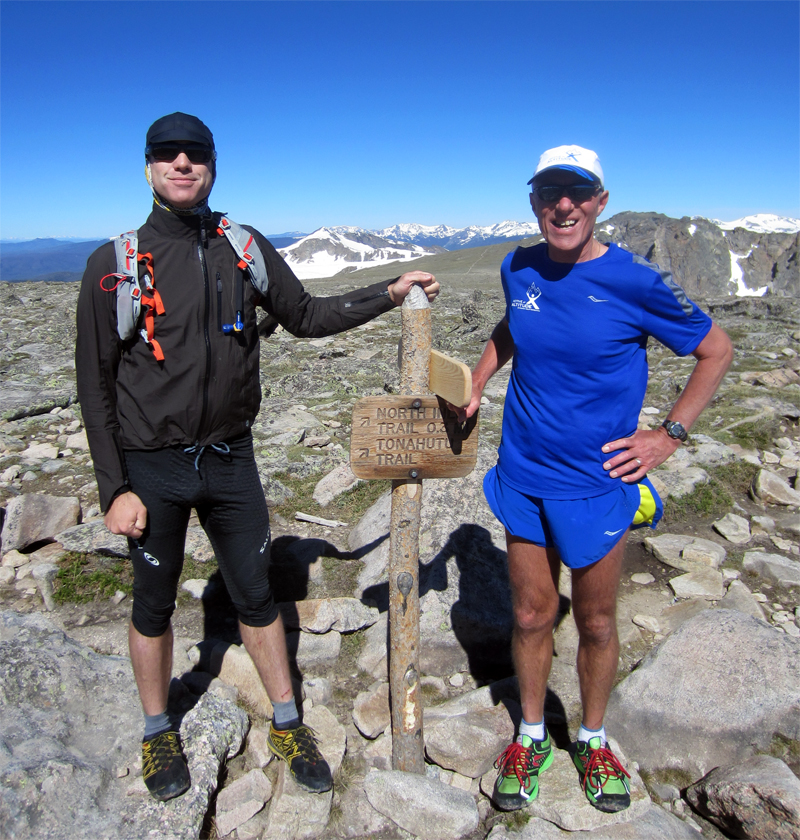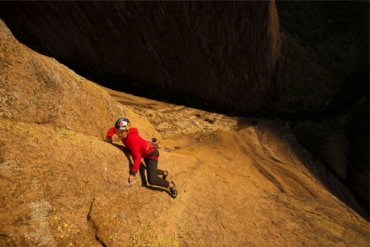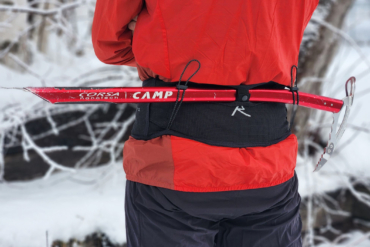
The trail ended at 10,000 feet. Footprints in snow continued ahead, a scattered field of post-holes fading into trees above. “I guess we head uphill and west,” I said, looking at my topo map.
We’d anticipated a clear trail run up Flat Top Mountain, a 12,324-foot peak in Rocky Mountain National Park. But heavy snow and cold temps have kept the snowpack later this year.
Terry Chiplin moved from Great Britain to a high-altitude home in Estes Park, Colo., for just this kind of thing — thin mountain air and snow in June. “There’s something about being up here I can’t describe,” he said.

Chiplin lives near 9,000 feet. He operates a business called Active at Altitude, which hosts camps and retreats in and around Rocky Mountain National Park.
GearJunkie managing editor Sean McCoy met Chiplin last October at the inaugural Estes Trail Ascent, a trail-running conference in Estes Park. On a family trip to Colorado last month, I used the excuse of interviewing Chiplin to get him to lead me up a peak on a morning trail run.
He said every athlete can benefit from training at altitude, no matter what their ability level. “We have amateurs to Olympic hopefuls training here with us.”

Active at Altitude boasts Estes Park is the “ideal elevation to enhance endurance capacity.” Chiplin hosts “campers” from a few days to a month. (For example, the organization hosts a 5-day women’s running camp August 11-16 and a 7-day women’s camp September 7-14.)
They offer personalized coaching programs that combine training and tempering the body at altitude with beautiful trail runs in the surrounding Rocky Mountains.
Our run up Flat Top Mountain, a 9-mile round trip, is a favorite of the Active at Altitude crew. It gains about 3,000 feet from Bear Lake Trailhead, a popular day-hiking area in Rocky Mountain National Park.

Thick trees around an alpine lake, and a well-trod trail twisting up a slope, initiate the first miles of the route. We hit the snowpack well below treeline, and footprints went in many directions going up.
This is where I pulled out the map. We abandoned the trail and the footprints for a compass bearing and plodded in trail-running shoes up through the dense snow.
I climbed a ridge of rock to see ahead. Nothing but trees on the slope. So we pressed on, and after 20 minutes the bearing popped Chiplin and I out above treeline where the peak came into view.

A trail reemerged. The snow was gone, baked away in the high-alpine sun. We started running again, winding up the broad summit of the aptly named Flat Top Mountain.
A small sign on top marked a trail junction and the approximate highest point. Rocky Mountain National Park fell away to all sides. I pulled on a shell jacket; the wind was picking up.

Then it was time to run again. Chiplin jogged ahead as I took a final look around. We’d be at the treeline in 20 minutes or less, ready to traverse the deep snow in running shoes again, ready for the long run back to the trailhead thousands of feet below.
—Stephen Regenold is editor of GearJunkie. Contact or learn more about Active at Altitude here.







